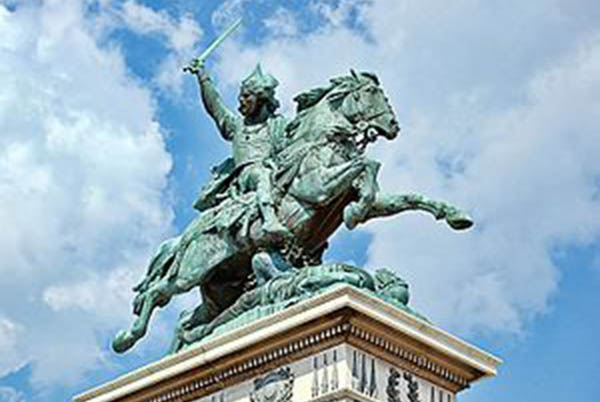He was a Celtic warrior who united Gaul (roughly modern day France) against the might of the Roman Empire but was finally defeated by Julius Caesar.
Julius Caesar Defeats the Celtic Tribes in Gaul
The Celts Rise and Revolt
In 53 BCE, the Gauls rose in protest against the foreign invaders. Romans, who had settled at Cenabum (Orleans, France) the main town of the tribe of the Carnutes, were slaughtered. The revolt was unexpected and surprised the legions that were trapped in their camps, and Julius Caesar who was wintering in Italy.
Vercingetorix
The following year, a young warrior, Vercingetorix, a chieftain of the Arverni was selected as the supreme general of the Gauls, an unlikely candidate for the position as his father, Celtillus, had been executed by the democratically elected magistracy for scheming to establish himself as king of the Arverni.
Vercingetorix immediately launched an offensive into the Roman-held south planning to capture the strategic town of Narbonne. Roman legions augmented by German mercenaries pushed them back, forcing them to retreat.
Feelings against the Romans ran high and Vercingetorix united the Celtic tribes against the enemy. Even the long-term allies to Rome, the Aedui, changed sides.
Vercingetorix advocated a scorch-earth policy scorching the land, and burning crops and food supplies.
But although he was a first-class leader and general, he was outclassed by Caesar’s tactical genius and the superior efficiency of the Roman legions.
Vercingetorix Retreats to Alesia (Alise-Sainte-Reine, east France)
After a defeated cavalry battle, Vercingetorix withdrew to the hill fort of Alesia. The town was eventually taken and Vercingetorix surrendered to Caesar. He was kept prisoner until 46 BCE, when he was marched through Rome in chains and executed.
When Vercingetorix, supreme military leader of the Gallic army, surrendered to Julius Caesar at Alesia in 52 BCE, the last major threat to the complete Roman conquest of Gaul disappeared. Vercingetorix was taken prisoner and the population of the hill fort distributed amongst the legions as slaves.
Some Celtic leaders continued the revolt but were easily defeated by the superior Roman discipline and efficiency. In northern Gaul, leaders who were captured were flogged and then beheaded; some managed to escape crossing the Rhine into Germanic territories. In southwest Gaul, any resistance to Roman rule was met with brutal consequences; Celt warriors that were taken prisoner had their right hands amputated.
The threat to Roman rule by the Celts in Gaul was now ended. Gaul had lost approximately two million people, one million killed and one million sold into slavery.
The Romans Are Victorious and Gaul is Romanised
The prosperous and most economically successful part of Gaul, the central part, was devastated and the Romans began rebuilding and landscaping the region in their own image.
Romans built new towns and moved the surviving populations into them, abandoning the Celtic oppida. The Romans promoted commerce and industry within Gaul, administering the region with a velvet glove. A shrine to Rome and the emperor Augustus was inaugurated at Lugdunum (Lyon) in 12 BCE, an Aedui oppidum that was allowed to stand and retain its Celtic name.
The Romanisation of the Celtic aristocracy was swift; many Gauls adopted the customs of the Roman elite, some becoming Roman citizens.








